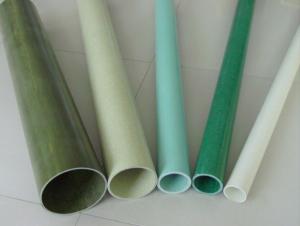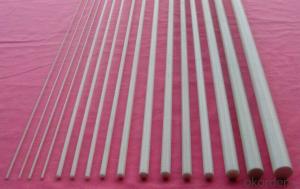FRP Pultrusion Profiles Fiberglass Tube Pole for Mop
- Loading Port:
- China Main Port
- Payment Terms:
- TT OR LC
- Min Order Qty:
- -
- Supply Capability:
- -
OKorder Service Pledge
OKorder Financial Service
You Might Also Like
Specifications of Fiberglass Tube Pole for Mop:
1. Multicolor fiberglass tubes
2. Light weight&high strength
3. Corrosion resistence
4. Anti-aging
Features of Fiberglass Tube Pole for Mop:
Corrosion resistant
High strength & light weight
Long service life
Fire retardant
Impact resistant
Nonconductive and thermal insulation
Non-magnetic electromagnetic transparency
Dimensional stability, Bright color
Low-maintenance
Size list of Fiberglass Tube Pole for Mop:
Diameter(mm) | Diameter(mm) | ||
OD | ID | OD | ID |
4 | 2 | 19 | 14.5 |
5 | 3 | 20 | 15 |
6 | 3 | 22 | 16 |
6 | 4 | 24 | 18 |
6.5 | 3 | 25 | 20 |
6.5 | 4 | 25.4 | 20 |
7 | 4 | 26 | 20 |
7 | 3 | 28 | 24 |
8 | 5 | 30 | 25 |
8 | 4 | 32 | 27 |
8.5 | 4 | 35 | 30 |
9 | 5 | 38 | 30 |
9.5 | 5 | 40 | 30 |
10 | 6 | 40 | 32 |
11 | 7 | 40 | 35 |
12 | 8 | 50 | 44 |
12.7 | 8 | 50.8 | 44 |
14 | 10 | 76 | 70 |
15 | 10.5 | 100 | 95 |
16 | 12 | 100 | 93 |
18 | 13 |
| |
- Q: Are FRP pultrusion profiles resistant to seismic activity?
- Yes, FRP pultrusion profiles are generally resistant to seismic activity. Due to their high strength-to-weight ratio and excellent flexibility, FRP profiles have demonstrated great resilience and durability during seismic events. Additionally, their non-corrosive nature and superior fatigue resistance make them suitable for seismic-prone regions. However, specific design considerations and engineering analysis are necessary to ensure optimal performance in seismic conditions.
- Q: Are FRP pultrusion profiles resistant to jet fuel?
- Yes, FRP pultrusion profiles are generally resistant to jet fuel.
- Q: What are the different types of FRP pultrusion profiles available?
- A variety of FRP pultrusion profiles are available to meet specific application requirements and performance criteria. These profiles include: 1. Standard shapes: These profiles are widely used in various industries and applications. They come in different sizes and shapes, such as round tubes, square tubes, rectangular tubes, and angles. Standard shapes offer versatility and are suitable for both structural and non-structural applications. 2. Custom profiles: These profiles are tailored to customer specifications. They offer flexibility in terms of shape, dimensions, and reinforcement options. Custom profiles are ideal for unique or specialized applications where standard shapes may not suffice. 3. Structural profiles: These profiles are designed for high strength and stiffness. They are commonly used in load-bearing applications, including beams, columns, and trusses. Structural profiles are reinforced with additional fibers to enhance their load-bearing capacity. 4. Electrical profiles: These profiles possess excellent electrical insulation properties. They find application in electrical and electronics applications such as cable trays, busbars, and insulating supports. Electrical profiles offer high dielectric strength and resistivity. 5. Environmental profiles: These profiles are formulated to withstand harsh environmental conditions, including extreme temperatures, UV radiation, and chemical exposure. They are commonly used in outdoor applications like structural supports, handrails, and grating systems. Environmental profiles offer long-term durability and resistance to degradation. 6. Fire-retardant profiles: These profiles are designed to have improved fire resistance properties. They are commonly used in applications where fire safety is crucial, such as building construction, transportation, and aerospace. Fire-retardant profiles incorporate additives that inhibit flame spread and reduce smoke generation. It is important to note that these are just a few examples of the FRP pultrusion profiles available. Depending on specific industry requirements, there may be other specialized profiles. The selection of the appropriate profile depends on factors such as the intended application, load requirements, environmental conditions, and regulatory standards.
- Q: Can FRP pultrusion profiles be used in the water treatment industry?
- Yes, FRP pultrusion profiles can be used in the water treatment industry. FRP (Fiber Reinforced Plastic) offers excellent corrosion resistance and durability, making it suitable for various applications in water treatment plants. FRP pultrusion profiles can be used in the construction of water tanks, pipes, pumps, and other equipment, providing a lightweight and high-strength alternative to traditional materials like steel. Additionally, FRP profiles are non-conductive and have low thermal conductivity, making them ideal for applications involving chemicals and extreme temperature variations commonly found in water treatment processes.
- Q: Are FRP pultrusion profiles resistant to chemicals used in food packaging?
- FRP pultrusion profiles have proven to be highly resistant to chemicals typically employed in the realm of food packaging. Their remarkable ability to withstand a vast array of chemicals, including acids, bases, solvents, and oils, is well-documented. Consequently, FRP pultrusion profiles are a fitting option for applications that necessitate interaction with food packaging materials. Nevertheless, it is crucial to acknowledge that the chemical resistance of FRP profiles may differ based on the formulation and type of resin utilized. Consequently, it is prudent to seek guidance from the manufacturer or supplier to ensure that the chosen FRP pultrusion profiles are compatible with the specific chemicals employed within the food packaging industry.
- Q: How do FRP pultrusion profiles perform in high-wind areas?
- FRP pultrusion profiles are well-suited for high-wind areas due to their inherent strength and durability. These profiles are made from reinforced polymers, typically fiberglass, which provides excellent resistance to wind loads. FRP pultrusion profiles have high stiffness and flexural strength, enabling them to withstand the forces generated by strong winds without significant deformation or failure. Additionally, their corrosion resistance makes them highly suitable for coastal or harsh environments often associated with high-wind areas. Overall, FRP pultrusion profiles perform admirably in high-wind areas, offering reliable and long-lasting structural solutions.
- Q: What are the features of Glass Fiber Reinforced Plastic Pultruded materials and chairs?
- Glass fiber reinforced plastic extruded sections for chair bars, corrosion resistance, aging resistance, good decorative (wood grain glass fiber reinforced plastic), Candice's color wood grain felt.No recycling value. I'd say that's probably the best feature right now. Installed, no one cares about, will not lose!
- Q: Are FRP pultrusion profiles resistant to fading or discoloration?
- FRP pultrusion profiles possess exceptional resistance against fading and discoloration. This attribute stems from the inherent properties of the materials employed in their construction. Typically, FRP profiles are fabricated using a blend of fiberglass reinforcements and a polymer resin matrix, both of which inherently resist UV radiation and other environmental factors that lead to fading and discoloration. The polymer resin matrix used in FRP profiles is specifically designed to exhibit outstanding chemical resistance and UV stability. As a result, the profiles retain their original color and appearance for an extended duration. This makes FRP pultrusion profiles an ideal choice for outdoor applications, where exposure to sunlight and harsh weather conditions is prevalent. Additionally, the pultrusion manufacturing process ensures that the color of FRP profiles remains consistent throughout their entire cross-section. Consequently, even in the presence of minor surface damage or wear, the underlying color of the profile remains unchanged, ensuring a uniform appearance. In summary, FRP pultrusion profiles offer unparalleled resistance against fading and discoloration, making them a resilient and long-lasting option for a wide range of applications, including construction, infrastructure, transportation, and more.
- Q: How do FRP pultrusion profiles perform in high humidity environments?
- FRP pultrusion profiles perform exceptionally well in high humidity environments. The fiberglass reinforcement in the profiles provides excellent resistance to moisture absorption, preventing any adverse effects on their structural integrity. This makes them highly durable and suitable for long-term use in humid conditions without any significant degradation or damage.
- Q: What are the different surface finishes available for FRP pultrusion profiles?
- FRP pultrusion profiles offer several options for surface finishes that aim to improve the appearance, durability, and practicality of the profiles. 1. Smooth Finish: The smooth and glossy surface of this basic finish option creates a polished and clean appearance, which is ideal for applications requiring a sleek and professional look. 2. Textured Finish: Adding texture to the profile surface enhances grip and slip resistance, making it suitable for walkways, stairs, and ramps that require improved traction. 3. Anti-Skid Finish: Similar to the textured finish, anti-skid finishes provide superior slip resistance, making them ideal for areas exposed to wet or slippery conditions like marine environments, bridges, and industrial flooring. 4. UV Resistant Finish: Profiles exposed to outdoor environments can benefit from a UV resistant finish that safeguards against sunlight damage, preventing color fading, degradation, and loss of mechanical properties. 5. Fire Retardant Finish: Fire retardant finishes enhance the fire resistance of FRP profiles, making them essential in applications where fire safety is a concern, such as building construction, transportation, and electrical enclosures. 6. Colored Finish: FRP pultrusion profiles can be customized with colored finishes to match specific design or branding requirements, allowing for visual integration with the surrounding environment. It's important to note that the availability of these surface finishes may vary depending on the manufacturer and specific product. Consulting with an FRP pultrusion specialist or supplier can provide more detailed information on the available finishes and their suitability for various applications.
Send your message to us
FRP Pultrusion Profiles Fiberglass Tube Pole for Mop
- Loading Port:
- China Main Port
- Payment Terms:
- TT OR LC
- Min Order Qty:
- -
- Supply Capability:
- -
OKorder Service Pledge
OKorder Financial Service
Similar products
Hot products
Hot Searches
Related keywords




























